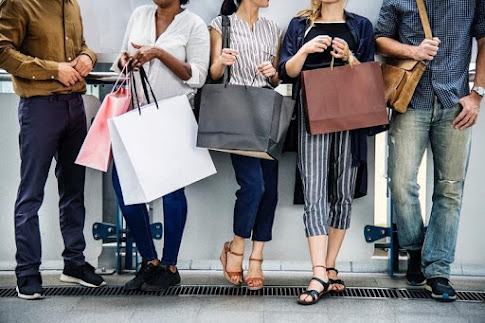How design retailers can endure the lockdowns and make omni-channel encounters for future development
In this selective meeting with FashionUnited, Koen Vanpraet, CEO of installments supplier PXP Financial, offers some pragmatic guidance for design retailers hoping to move past lockdowns and pandemic-related difficulties. Mixing computerized and in-store encounters and offering an expansive decision installment astute can reverse the situation for garments brands in the short and medium term.
How has COVID-19 affected the design retail industry?
While each area has been influenced by COVID-19 somehow or another, the retail business has encountered perhaps the most emotional movements of all. Of these, the garments and attire area was hit the hardest. With lockdown set up, numerous actual stores had to close their entryways, and in an industry where in excess of 80% of exchanges occurred in actual spaces this will undoubtedly leave its imprint.
Back in March 2020, when the principal lockdown started, the UK government delivered its retail deals report which estimated the volume of retail deals for that month. The report found that attire stores saw a fall in deals of 34.8 percent when contrasted with February, which at that point fell further by a record 50.2 percent in April 2020, when lockdown was at its pinnacle.
In any case, close by this drop in physical retail there has been a blast in online business. For specific brands, deals have really expanded. For instance, H&M announced that online deals hopped 36 percent among March and May. Tragically, this was adequately not to neutralize the misfortune from actual stores, as brands, for example, Primark revealed a yearly misfortune in benefit when contrasted with earlier years.
 |
| Image source from indianretailer |
How has COVID-19 has affected customer conduct around style?
A large number of the customer conduct patterns we've noticed – diminishing in-store footfall, the developing inclination for internet business, and the quick move away from money installments – were very much archived before the main lockdown. Coronavirus has just quickened these elements, because of the expanded need of internet shopping and general wellbeing informing prompting against taking care of money.
Close by this, the pressing factors of the principal lockdown constrained startling movements in purchaser conduct. A mid-2020 Mintel report found that customers under lockdown were redirecting reserves that would typically have been utilized for a vacation or a night out into home improvement or diversion buys. Design falls under this class also, albeit not in a similar way.
With actual stores shut, web based business shopping turned into the norm for most buyers going ahead, yet this introduced a few issues. Shoppers could presently don't attempt before they purchase, which implied many were reluctant to focus on a buy, particularly with style not being viewed as a fundamental thing.
How has the retail space utilized innovation to handle the difficulties of COVID-19?
The greatest test for some, retailers was the move to a basically online business stage, especially during the underlying lockdown time frame. Fortunately, for the second lockdown a considerable lot of these retailers are as of now set-up with a current online shop so are in a superior situation to exploit the far and wide move to purchasing on the web. Shockingly, those with an immature or still without a web based business stage are struggling.
For these retailers, bringing the initial jump into internet business can be made a lot easier when they utilize a measured and configurable online framework. These frameworks assist retailers with building a web based selling stage that can safely take installments. With single recommendations offering everything from ongoing detailing and oversaw security administrations to checkout customisation, traders can begin selling their items online in the squint of the eye.
Essentially, for organizations worried about advanced change, these selling stages are straightforward and simple to use, with no compelling reason to increase back-end expenses, intricacy, or administrator. Numerous retailers have had the option to hop into internet business with a base measure of cost, time and intricacy, and in a split second start tolerating numerous new installment choices too.
For the design business battling under COVID-19, internet selling and installment stages have the adaptability to bring to the table extraordinary help. Setting up an online business stage that can offer numerous types of installment is advantageous for clients, and it will not feel like a brief or squandered exertion when lockdown backs off as online business can uphold, not supplant, the retail location.
How might this innovation keep on aiding retailers in 2021?
These internet selling stages have been urgent for the retail area up until now and will keep on being a huge help in the new year. The benefit of a web based business store is that it doesn't have to supplant the physical store.
Shippers can offer an omnichannel experience to clients that bolsters their new practices in a Covid world. Purchase on the web, get coming up (BOPIS), attempt coming up, and buy on the web and other disconnected/online mixture shopping encounters can turn out to be more far and wide. This can assist with chopping down essentially on line times, which can be a significant issue in huge attire stores, and offers a more clean alternative for installment, which is on numerous buyers minds at the present time.



Comments
Post a Comment